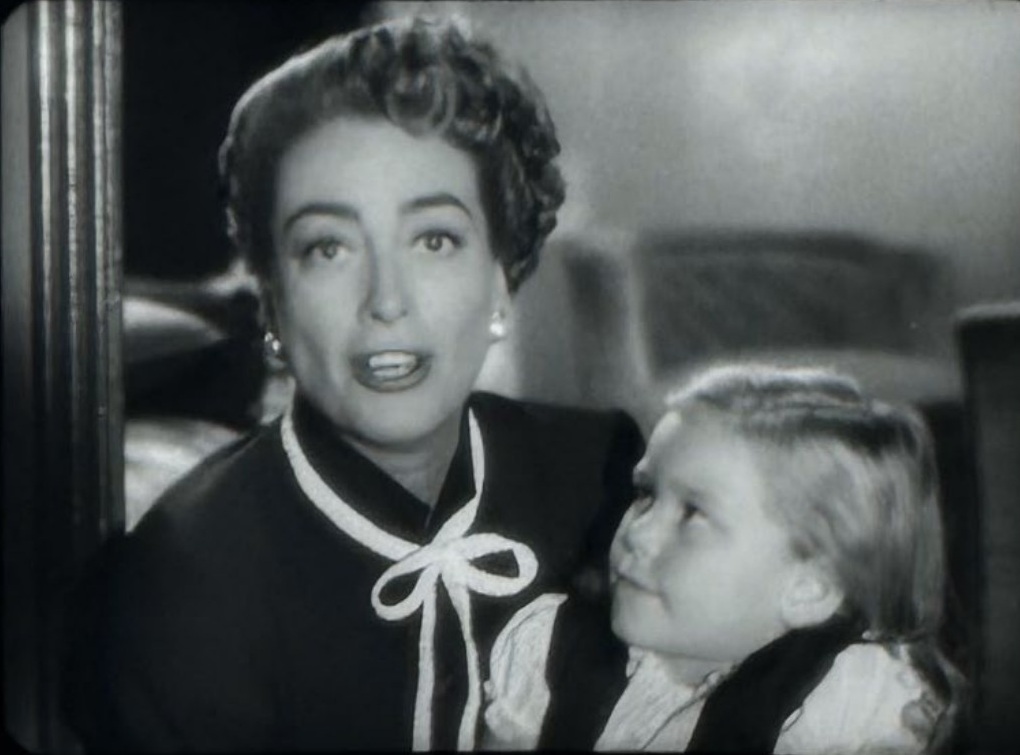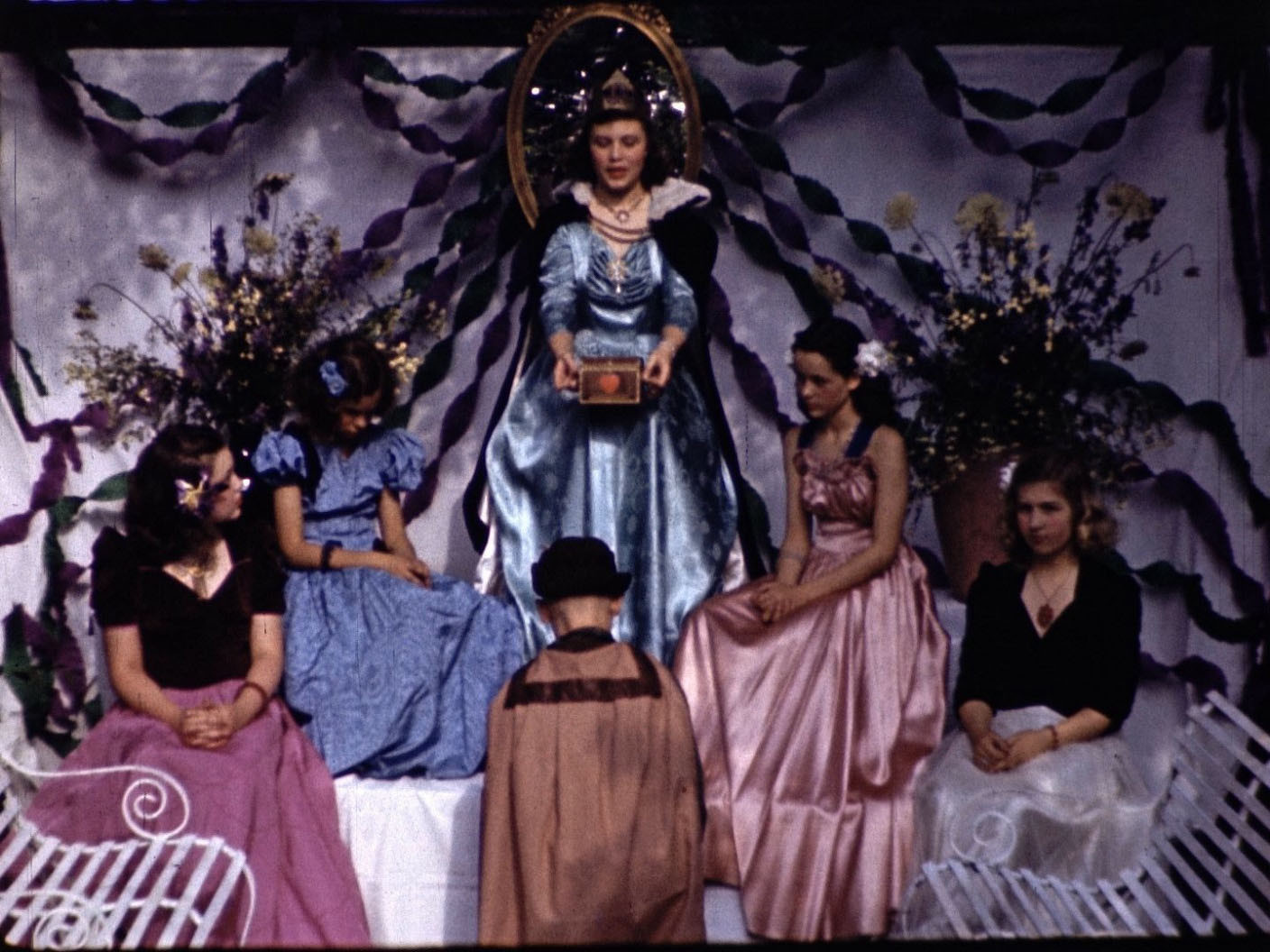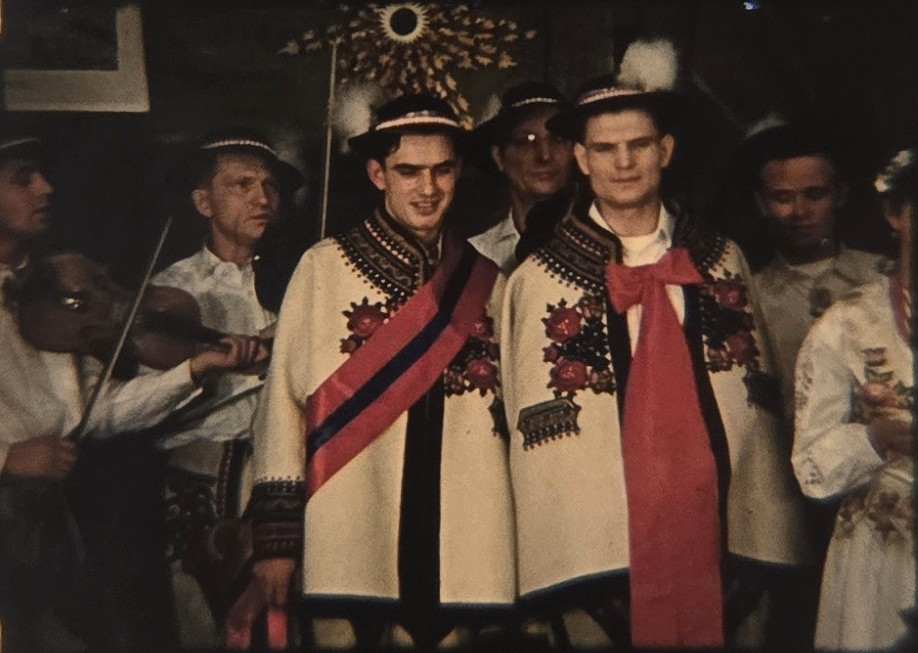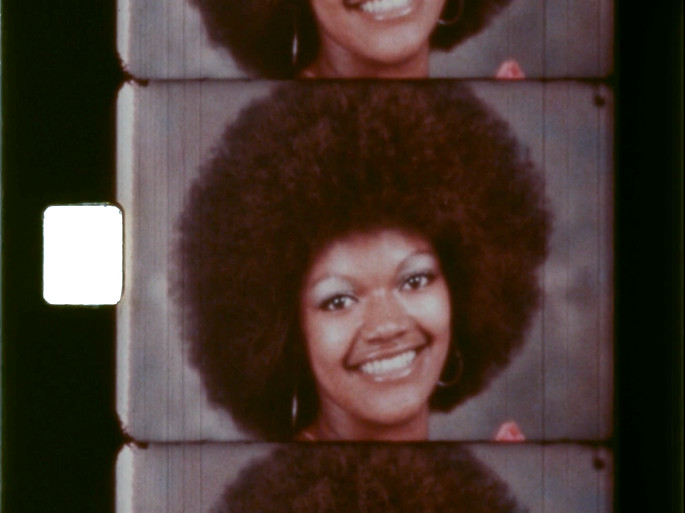81 Films to be Preserved by the 2025 NFPF Preservation Grants
 |
|
Eight public service and promotional films featuring Hollywood stars will be preserved by the George Eastman Museum with NFPF support. In this untitled teaser from 1952 Joan Crawford fundraises for a Texas clinic that cared for children with polio.
|
The National Film Preservation Foundation is proud to announce the recipients of its 2025 federally funded grants, which will allow 31 institutions across 14 states and the District of Columbia to preserve 81 films.
The richly varied selection ranges from Joan Crawford to Jordan Belson, Herbert Hoover to forensic science founder Dr. Rutherford Birchard Hayes Gradwohl, and it stretches from Polish Highlanders in Chicago to the Iñupiat in Alaska. The grant-winners encompass almost every genre of “orphan film.” These highlights give a taste of the selection—to see the full list of 2025 grant recipients, go here.
Documentaries are well represented this year. The National Gallery of Art will preserve three that chronicle noted artists: Femme/Woman: A Tapestry by Joan Miró (1979), documents the design and execution of a large-scale tapestry created by the Catalan-Spanish painter, sculptor, and ceramist. Mobile, by Alexander Calder (1980) details the creation and installation of the American sculptor’s final major piece, while David Smith, American Sculptor, 1906-1965 (1983) shows the abstract expressionist at work.
Among the community portraits are Eskimo Harvest (ca.1937), an intimate and respectful visual record of Indigenous lifeways in Inupiat community of Wales (Kingigin), on Alaska’s western coast, to be preserved by the University of Alaska Fairbanks, and Highlanders Wedding (1961), a reenactment of a traditional Polish Highlanders wedding in Chicago, featuring authentic costumes, dances, and songs. The Polish Highlanders Alliance Foundation will oversee the preservation.
Incisive social commentary is provided by another set of documentaries. Don’t Bank on Amerika (1970), created by author Peter Biskind during his teaching stint at the University of California Santa Barbara, chronicles campus unrest and the burning of a nearby branch of the Bank of America. The University of Pennsylvania will preserve The Tombs (1973), an unflinching look at the conditions in New York City’s notorious prison, directed by Phil Parmet (cinematographer for features ranging from Harlan County, USA to Devil’s Rejects). After parts of the film were broadcast on 60 Minutes the prison was permanently closed after a judge declared its conditions unconstitutional. From Spikes to Spindles (1976), directed by Christine Choy (Who Killed Vincent Chin?, 1987) covers the political awakening and history of Chinese Americans, from 19th century railroad workers to 20th century garment workers in New York’s Chinatown.
 |
|
An amateur production of Snow White (1945), just one part of the Mildred Keister Dennis Collection (ca.1940–55), which the Knox County Library will preserve through an NFPF grant.
|
The avant-garde selection includes several influential artists. Nine films by Jordan Belson, renowned for the psychedelic abstractions in his “visual music,” will be preserved by the Berkeley Art Museum and Pacific Film Archive, including classics such as Cosmos (1969) and the yoga-inspired Samadhi (1967), described by Belson as a “documentary of the human soul.”
Also to be saved in the experimental field are nine films by Owen Land (also known as George Landow), four animated films by Kentucky filmmaker Ed Counts, five early 3-D computer animated films created by A. Michael Noll, and the feature-length Making is Choosing: A Fragment of Life: A Broken Line: A Series of Observations (1989), an "autobiographical fiction" by Willie Varela. In the related genre of the essay film, the National Museum of African American History and Culture will preserve Two Women (1977), a deeply personal exploration of Black womanhood across generations created by Carol Parrott Blue, a multifaceted artist noted for her contributions to the L.A. Rebellion.
In the category of home movies are a group of vivid, eclectic collections. The Herbert Hoover Presidential Library will preserve 43 Kodacolor films, shot between 1928 and 1935, showing the President and his family in and out of the White House. Seven films from this collection were preserved through an earlier NFPF grant; this year’s will ensure the survival of the entire collection. Another large body of amateur filmmaking, the Mildred Keister Dennis Collection (ca.1940-55), will be preserved by the Knox County Public Library. Not only a member of Knoxville high society but also a member of the city’s Better Films Committee, Denis extensively filmed her life and that of her daughter Carloyn, and even cast her in Snow White and the Seven Dwarfs, a 45-minute homemade homage to the Disney feature.
Two home movie collections cover the glory years of aviation. The Pan Am Historical Foundation will preserve footage shot by former US Navy Pilot Walter A. Brooke, which covers the opening of the first intercontinental route in American commercial aviation, an airmail route to Surinam piloted by Charles A. Lindbergh. The Texas Archive of the Moving Image will save the home movies of RV Carleton. Named one of the top ten pilots in the country by Aviation magazine, Carleton was tasked by Braniff International with surveying and preparing the airline’s new routes to central and south America in the late 1940s. He documented his efforts on film, including his dangerous jet-assisted take-offs from La Paz, the world’s highest airport.
 |
|
Highlanders Wedding (1961), to be preserved by the Polish Highlanders Alliance Foundation with NFPF support.
|
Several research films are also slated for preservation. Washington University in St. Louis will preserve six reels made by Dr. Rutherford Birchard Hayes Gradwohl, founder of the American Academy of Forensic Sciences, and author of the definitive textbook on forensic science, still in use today. The reels focus on professional life at the Gradwohl School of Laboratory Technique and provide instruction in tasks such as CO2 testing of blood plasma. The National Museum of American History, Smithsonian Institution, will save a set of experimental three-color separation films created on 66mm during the 1920s by Danish American inventor August Plahn, who’d created a viable but obscure rival to Technicolor.
Stars from Hollywood’s Golden Age provide glamor among the grant winners. The San Francisco Film Preserve will preserve Weak But Willing (1929), a sound comedy short starring Vaudeville dialect comedian Will King that also features a young Jean Harlow as a flirtatious nightclub habitué. George Eastman Museum will save a set of eight public service and promotional shorts representing an overlooked area of film history. Know for Sure (1941), part of the Surgeon General’s campaign to combat syphilis, was directed by Lewis Milestone and produced by 20th Century-Fox and the Academy of Motion Picture Arts and Sciences, with a cast including Ward Bond, Tim Holt, and Etta McDaniel. The preservation will restore graphic imagery censored for mixed and female-only audiences. Also in the set: Ginger Rogers Finds a Bargain, produced in 1944 as part of the 4th War Loan Drive; A Message from Mr. Gregory Peck (1948), produced by David O. Selznick to advocate for the Red Cross, and Joan Crawford in an untitled 1952 effort by the Motion Picture Theatres of Texas to fundraise for the Gonzales Warm Springs Foundation, which provided care for children with polio.
 |
|
Two Women (1977), LA Rebellion filmmaker Carrol Parrott Blue’s first film, will be preserved by the National Museum of African American History and Culture, Smithsonian Institution, through an NFPF grant.
|
The NFPF preservation grants are made possible by funds authorized through The Library of Congress, have provided preservation support to cultural institutions in all 50 states, the District of Columbia, and Puerto Rico to save more than 2,937 films. Films saved through the NFPF programs are used in education and seen widely through screenings, exhibits, and streaming. A curated selection of the preserved films is available for viewing on the NFPF website, and more than 320 additional titles have been made accessible by our grant recipients.
